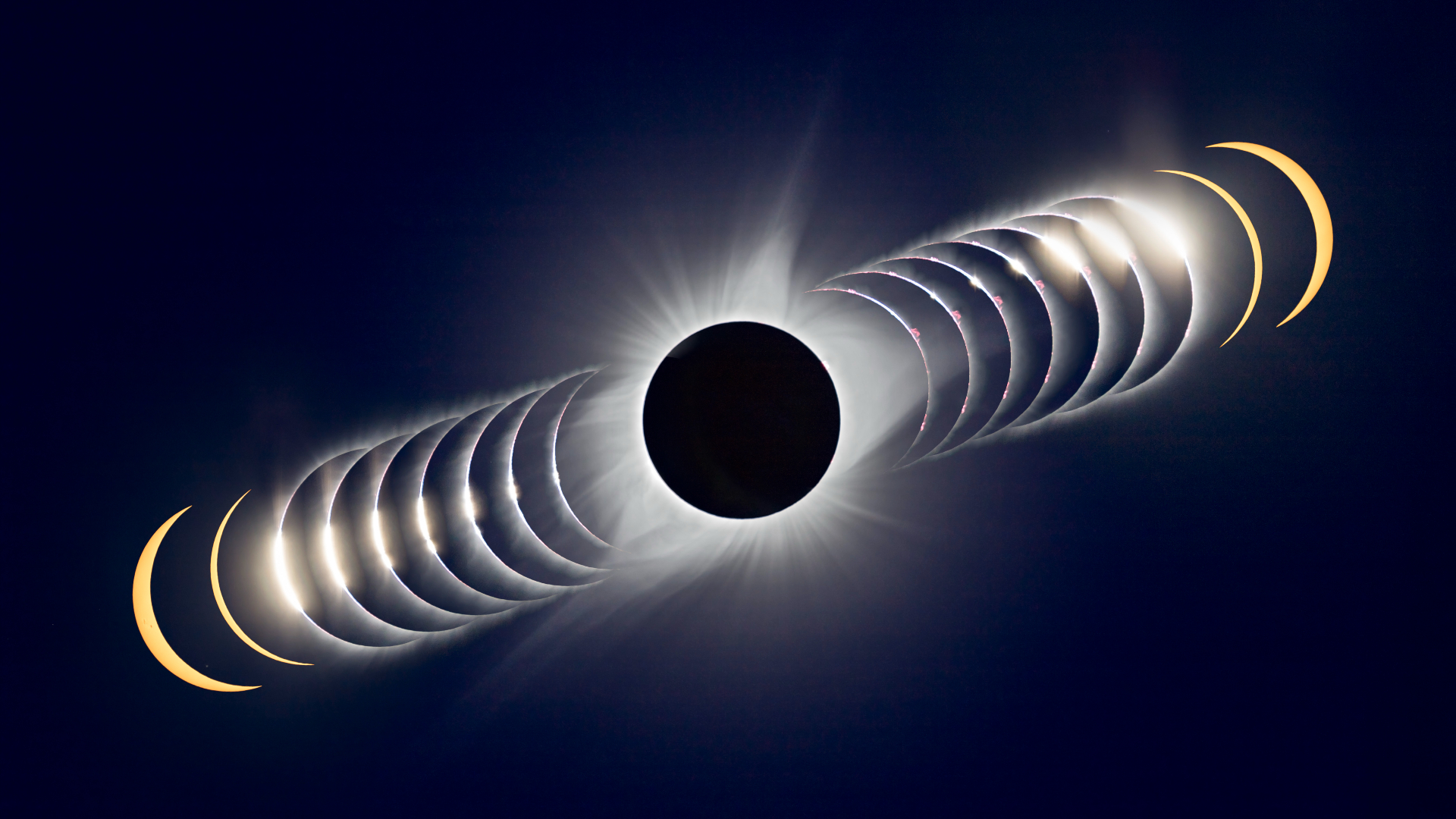Solar eclipse 2023
A solar eclipse occurs when the Moon passes between the Earth and the Sun, blocking some or all of the Sun's light from reaching the Earth. Depending on the alignment of the Moon and the Sun, a solar eclipse can be partial, annular, or total. A partial solar eclipse happens when the Moon covers only a part of the Sun's disk. An annular solar eclipse happens when the Moon is too far from the Earth to completely cover the Sun, leaving a ring of sunlight around the Moon. A total solar eclipse happens when the Moon completely covers the Sun, creating a dark shadow on the Earth.
On April 20, 2023, a hybrid solar eclipse will occur, meaning that it will be annular in some locations and total in others. The path of annularity will start in Indonesia and cross Papua New Guinea, Australia, Timor-Leste, and the Indian Ocean. The path of totality will start in Western Australia and cross Indonesia and East Timor. The maximum duration of annularity will be 3 minutes and 28 seconds, while the maximum duration of totality will be 1 minute and 16 seconds.
A hybrid solar eclipse is a rare phenomenon that occurs when the Earth's curvature and the Moon's distance from the Earth vary along the eclipse path. This causes some regions to see an annular eclipse and others to see a total eclipse. The last hybrid solar eclipse occurred on November 3, 2013, and the next one will occur on April 8, 2024.
- Using a pinhole projector: This is a simple device that projects an image of the Sun onto a screen using a small hole. You can make one using a cardboard box, a sheet of paper, and a pin or needle. Cut a small hole in one side of the box and tape the paper on the opposite side. Point the hole towards the Sun and look at the paper to see an inverted image of the eclipsed Sun.
- Using solar filters: These are special glasses or lenses that block most of the Sun's light and allow you to look at it directly. You can buy them online or from reputable vendors. Make sure they are certified by ISO or CE standards and have no scratches or damages. Do not use sunglasses, binoculars, cameras, or telescopes without proper filters, as they can magnify the Sun's rays and damage your eyes.
- Using a telescope with a projection method: This is a technique that uses a telescope to project an image of the Sun onto a screen or a wall. You need to cover the telescope's eyepiece with a white card or paper and adjust the focus until you see a clear image of the Sun. Do not look through the telescope or touch any part of it during the projection, as it can get very hot.
A solar eclipse is an amazing spectacle that can inspire awe and wonder. It is also an opportunity to learn more about astronomy and our place in the solar system. If you are lucky enough to witness one, make sure you do it safely and enjoy this rare event.





Comments
Post a Comment